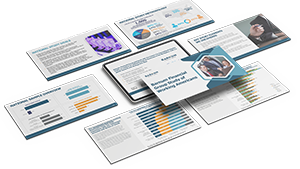
A Heritage of Social Investing
One thing that might surprise you about Socially Responsible Investing (SRI), also called Impact Investing, is that it isn’t a recent phenomenon – not even close. In the 18th century the Methodist church wouldn’t invest in companies that made or sold liquor, tobacco products or promoted gambling.
Today, many Americans want their investments to reflect their social or religious beliefs, or both. They make their own judgements about what securities and mutual funds to own, or which traded funds exchange. Oftentimes, this will increase the cost of investing.
You May Pay More
Amy Fontinelle, an experienced personal finance writer, in a recent article for Mass Mutual points out that “There are two sides to SRI — investing in companies that you feel have ethical business operations and more so avoiding companies that you think don’t have ethical business practices, products, or services. If you shop in a way that supports your values, you know that you sometimes must pay more for products that are made in ways you endorse by companies you approve of. Organic, fair-trade coffee and sweatshop-free clothing are often more expensive than their conventional counterparts.”
FINRA Survey
In 2021, the Financial Industry Regulatory Authority (FINRA) conducted a survey and found that investors had differing ideas of what kind of returns they should get from investing in SRI funds. Some 27% expected lower returns than the broad market but 41% anticipated returns in line with the rest of the market. Fourteen percent thought returns would be higher, and the remainder polled had no opinion.
Other research stresses that it’s best to look at how individual SRI funds perform and how fund expenses have declined in recent years. Other research has found that, overall, companies whose stocks make up ESG (Environmental, Social, Governance) fund portfolios have a worse track record on environmental and labor issues than companies whose stocks aren’t included in ESG portfolios. According to Sanjai Bhagat, Professor of Finance at the University of Colorado, ESG investors may be accomplishing the opposite of what they hope to do.
Investing Options
Following your conscience might mean eliminating companies that profit from some industries like:
- Adult Entertainment
- Alcohol
- Animal Testing
- Contraception
- Deforestation
- Gambling
- Genetically Modified Organisms
- Human Rights Violations
- Thermal Coal Mining
- Weaponry
What each investor defines as responsible or irresponsible depends on their personal beliefs. You may seek out companies whose practices are in line with your beliefs when it comes to matters such as:
- Board Independence
- Business Ethics
- Environmental Protection
- Executive Pay
- Gender and Racial Diversity,
- Labor Standards
- Privacy and Data Security
- Religious Issues,
- Renewable Energy
Other Challenges
If you devote a significant portion of your portfolio to one industry, you run the risk of a larger exposure if a negative economic event hits that industry. Under-diversification is a risk that is preventable and not unique to SRI.
Diversified ESG funds may give you the best chance at not sacrificing returns, while still socially investing. More narrowly focused ESG funds might align better with your values but will likely rise and fall more often as that industry’s fortunes change, potentially giving you more volatility than you might want.
Want to Learn More?
If you’re looking to develop a socially conscious investment plan, consider working with a financial professional. They can answer all your questions and help provide you with a diversified SRI plan.




